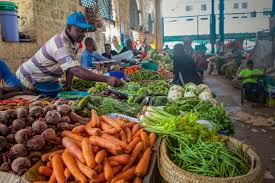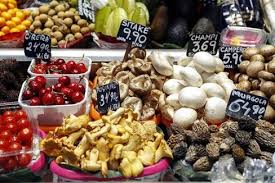Producer surplus is a measure of producer welfare. It is measured as the difference between what producers are willing and able to supply a good for and the price they actually receive.
Agricultural Marketing Margins
In the marketing of agricultural commodities, the difference between the price paid by the consumer and the price received by the producer for an equivalent quantity of farm produce is often known as the price spread. This is sometimes termed as the marketing margin. The total margins include:
- The cost of marketing functions
- Profits of the various market functionaries involved in moving the produce from production to the ultimate consumer. Marketing margins vary from channel to channel, market to market, time, and commodity to commodity.
Read Also: Factors that Hinders your Fishes from Growing Fast
Concepts of Agricultural Marketing Margins

1. Concurrent margins: These refer to the difference between the prices prevailing at successive stages of marketing at a given point of time. For example, the difference between the farmer’s selling price and the retail price on a specific date is the total concurrent margin. It does not take into account the time that elapses between the purchase and sale of the produce.
2. Lagged margin: This is the difference between the prices received by a seller at a particular stage of marketing during an earlier period. It is a ‘between concept’ because it takes into account the time that elapses between the purchase and sale by a party and between the sale by the farmer and the purchase by the consumer.
Marketable Surplus in Agricultural Production
It is the residual left with the producer farmer after meeting the requirements for family consumption, farm needs for seeds and feed for cattle, payment to laborers in kind, payment to the landlord as rent, and social and religious payments in kind. This may be expressed as:
MS = P – C
Where:
MS = Marketable surplus
P = Total production
C = Total requirements
Marketed surplus is the quantity of the produce that the producer-farmer actually sells in the market, irrespective of the requirements for family consumption, farm needs, and other payments.
Read Also: The Most Lucrative between Production of Fish Fingerlings or Raising them to Table Size
Relationship Between Marketable and Marketed Surplus

1. Marketable surplus < Marketed surplus: This refers to a forced sale or distressed sale, where the farmer retains a smaller quantity of the produce than the actual requirements for family and farm needs.
2. Marketable surplus > Marketed surplus: This occurs when farmers retain some of the surplus produce. Large farmers generally sell less than the marketable surplus because of their better retention capacity, hoping for a higher price later.
3. Marketable surplus = Marketed surplus: This happens when a farmer neither retains more nor less than the required amount. This holds true for perishable commodities.
Factors Affecting Agricultural Marketable Surplus
1. Size of holding: There is a positive relationship between the size of the holding and the marketable surplus.
2. Production levels: The higher the production on a farm, the larger the surplus will be, and vice versa.
3. Price of the commodity: The price of a commodity and the marketable surplus have a positive relationship, depending on whether one considers the short and long run or the micro and macro levels.
4. Size of family: The larger the number of family members, the smaller the surplus on a farm.
5. Requirement of feed: The higher the requirement for these uses, the smaller the marketable surplus of a crop.
Do you have any questions, suggestions, or contributions? If so, please feel free to use the comment box below to share your thoughts. We also encourage you to kindly share this information with others who might benefit from it. Since we can’t reach everyone at once, we truly appreciate your help in spreading the word. Thank you so much for your support and for sharing!
Read Also: Everything You Need to Know About Extinction of Animals

